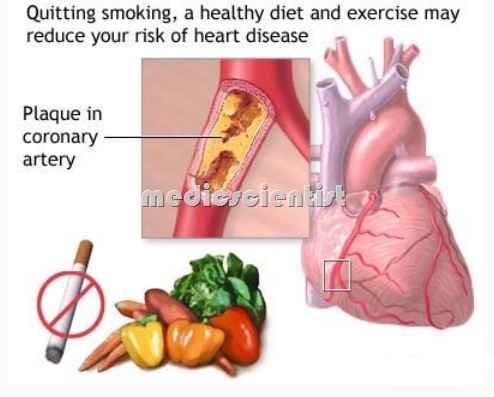Ischemic Heart Disease (IHD)
ischemic heart disease (IHO) is a disease of the heart due to a deficiency of supply of blood, oxygen and nutrients to the heart. Ischemic heart disease occurs when there is imbalance between supply (of blood, oxygen, nutrients) and demand (increased demand, less supply).
Ischemic Heart Disease (IHD) Causes
- Atherosclerosis -is the commonest cause Coronary spasm
- Arterial thrombi
- Coronary emboli.
Causes other than coronary atherosclerotic heart disease:
- Luteic aortitis (Syphilitic)
- Anomalous origin of left anterior descending
- coronary artery from pulmonary artery
- Aortic stenosis with LVH
- Anaemia
- Kawasaki disease in children coronary artery affected)
- Aortic regurgitation (AR)
- Hypertrophic obstructive cardiomyopathy (HOCM).
Risk factors for Ischemic Heart Disease (IHD)
- Variable degrees of association and, in some studies, no associations have been found for diabetes and insulin resistance, dyslipidemia,hypertension, and heart disease with VaD in population-based cohorts
- Age is nearly uniformly found to increase the risk of dementia after stroke
- High LDL (low density lipoprotein)
- Low HDL (high density lipoprotein)
- High TG and TC (triglycerides and total cholesterol)
- Stenoses within the coronary circulation most commonly occur in people who smoke
- Cigarette smoking
- Hypertension
- Diabetes mellitus
- Obesity.
Risk factors Role of Vascular Endothelium
- It maintains vascular tone
- It has anticoagulant surface
- It prevents inflammation
- Prevents atheroma formation .
- Prevents coronary artery disease
- The vascular endothelium is damaged by risk factors and atherosclerosis.
- plague fissuring, rupture of plaque, or haemorrhage into a plaque
- Collaterals do not develop in sudden occlusion of the coronary artery.
- Coronary blood supply is obstructed by atheroma, thrombus, thromboemboli, .
- When there is gradually progressive occlusion of the coronary arteries then collaterals develop which maintain the perfusion of the heart.
- If the cross-sectional area of coronary artery is reduced to 750/0, then at the time of increased demand, the blood flow cannot increase appropriately It means there is significant coronary artey obstruction, and such patients are usually symptomatic.
- At 800/0 reduction of the cross sectional areal the
- blood flow at rest is also compromised. Such
- patients are greatly handicapped, and are unable to carry out even routine activities without discomfort ..



